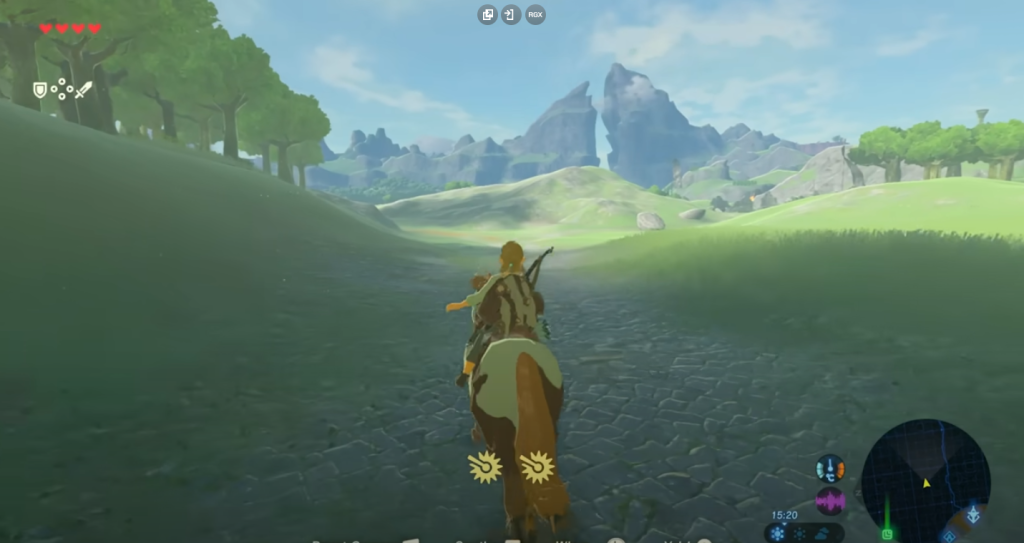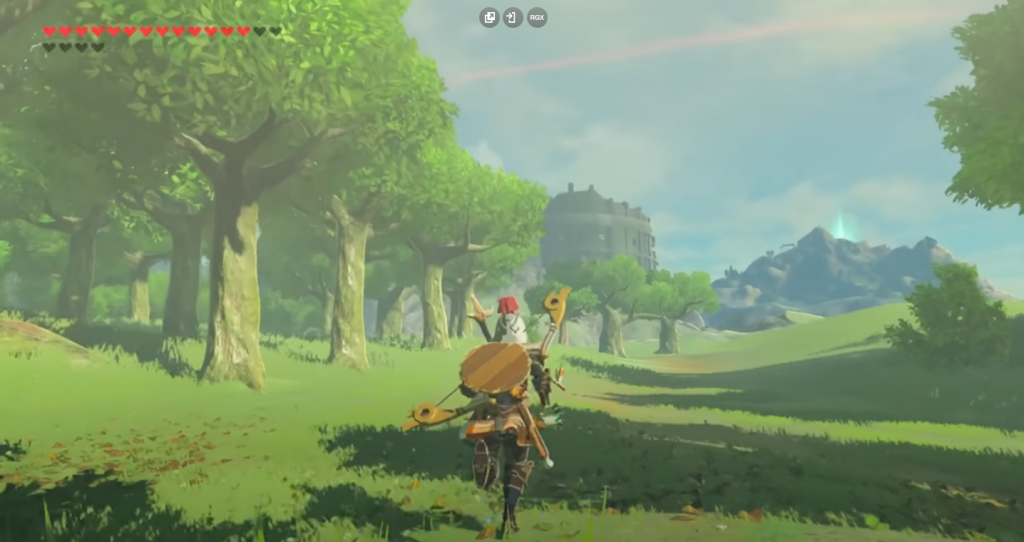The Legend of Zelda: Breath of the Wild introduces a new paradigm for open-world gaming through its exceptional world-building and innovative level design. The game showcases a vast, dynamic Hyrule that simulates a thriving ecosystem. Each region, from the dense forests of Faron to the windswept peaks of the Hebra Mountains, possesses a distinct identity, ambience, and historical significance. Rather than relying on densely populated urban centres or predetermined events, the game world evolves through environmental storytelling. Ruins, ancient monuments, and natural landmarks provide insights into the land’s history, while villages reflect the culture and challenges of their inhabitants.
Exploration in Breath of the Wild is fueled by curiosity rather than a predetermined list of objectives. The game subtly directs players through the terrain using visual cues such as distant shrines, looming Sheikah towers, or unexpected landmarks, empowering players to chart their course. This liberty fosters a perpetual sense of discovery, rewarding players with items or advancements and the excitement of uncovering hidden secrets or stumbling upon concealed narratives embedded in the environment.

The game features innovative level design that encourages player creativity through its unique mechanics, which revolve around physics, weather, and elemental interactions. Players can creatively solve puzzles, engage in combat, and explore by manipulating the environment—using fire for gliding updrafts, conducting electricity with metal objects, or freezing time to alter their surroundings. This open-ended gameplay allows for multiple solutions to challenges, promoting experimentation with various strategies.
Instead of traditional dungeons, the game incorporates over a hundred smaller shrines, each offering distinct puzzles and challenges. These shrines are spread throughout the game world, continuously testing players’ skills and encouraging inventive thinking. The Divine Beasts serve as larger dungeons, designed to complement the overall freedom of the game, presenting non-linear challenges that players can tackle in any sequence they choose.

The Legend of Zelda: Breath of the Wild excels by placing trust in its players. The game avoids excessive handholding through tutorials or constant prompts, encouraging players to explore and experiment at their own pace. Every aspect of Hyrule is meticulously crafted, creating a world that feels dynamic, immersive, and worth exploring, even after extensive playtime. It serves as a benchmark for world-building and level design, illustrating how genuine player freedom and intentional environmental storytelling can elevate open-world games to unprecedented heights.

Leave a Reply